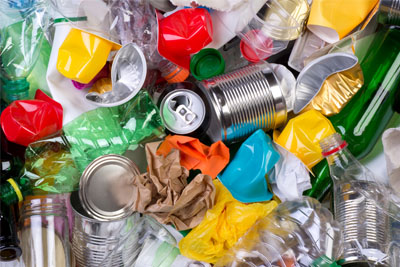
Recycling Applications for Particle Size Reduction Equipment
Recycled material falls into two broad categories: post-consumer recycled material and post-industrial (or pre-consumer) recycled material.
Post-consumer material is generally what people think of when they hear the word “recycling.” It’s the cans, glass and plastic that everyday consumers toss into recycling bins. According to recent figures from the U.S. EPA, about 67.8 million tons of waste generated by U.S. consumers is recycled annually.
Of that amount, about 67% is paper and paperboard, while 12% is metals and around 5% is glass, plastic and wood.
Just as important as post-consumer material is post-industrial material, which is captured at the end of a manufacturing process and then is re-used in that same process. Scrap generated during the manufacturing of aluminum cans is a good example. The leftover material is collected and worked into the aluminum to make the next batch of cans.
Regardless of the source, most recycled materials can’t go straight from the recycling bin or scrap heap to be manufactured into new products. The materials need to be processed first, often via particle size reduction.
Union Process Attritors have seen great success in milling recycled material for a wide range of industries beyond glass and plastic. Other applications include capturing precious metals from computer chips and grinding asphalt shingles.
Our Series S wet grinding batch Attritor is most frequently used in recycling applications.
Related Articles:
Union Process Manufactures Attritor For Green Manufacturing Initiative
Alternative Energy Companies Find Success Using Union Process Attritors